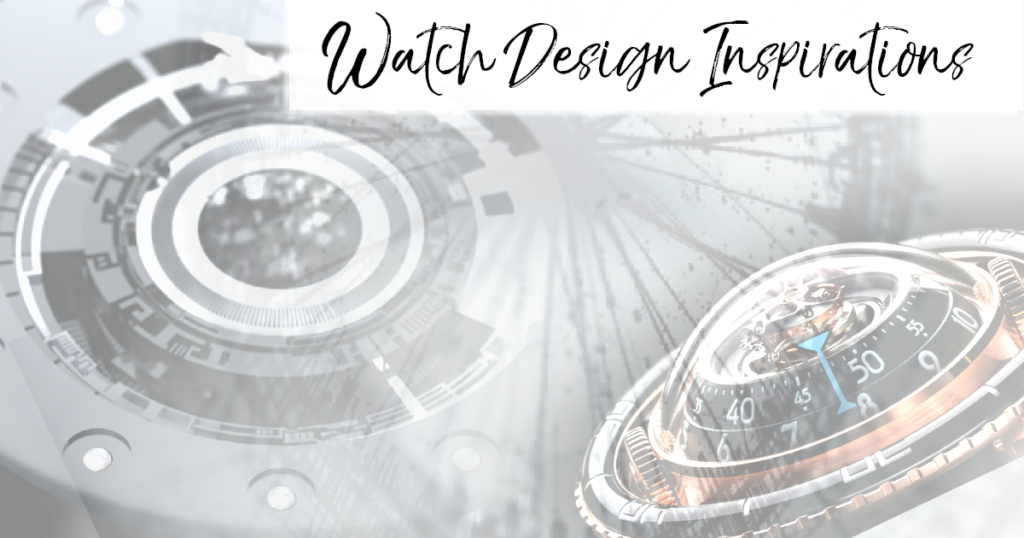
The watch on the left is our Techno-circle #1 watch.
Sections Of This Article:
- Where creative ideas come from: how to come up with new ideas
- Practicalities and engineering inspirations
- Watch design inspirations from materials
- Cultural inspirations on timepiece design
- The need for a story
- Collaborations: more than inspiration
- Unconstrainedtime, based on freely chosen aesthetics
Introduction
There are a very wide variety of different things which can act as watch design inspirations, from the obvious historical traditions, to the weird and wonderful. I look at how all this works, in this article, as well as exploring the fundamentals of where ideas come from and how to generate new ones.
I include many fascinating examples of watch design inspirations, and detail how each of our own initial watch designs was inspired.
Where creative ideas come from: How to Come up with new ideas
According to classical psychology research, there are three main types of creativity:
- exploratory: generating new ideas within an existing conceptual space,
- transformational: ignoring the rules to invent something interesting but impossible,
- combinational: which means combining existing ideas, which is the most common.
This aligns with what we see in watchmaking, where combining ideas coming from different fields is relatively common these days, along with very strong influences from the watchmaking, and related traditions (which in turn relate mainly to engineering and fine jewellery).
For example, the Audemars Piguet Royal Oak:
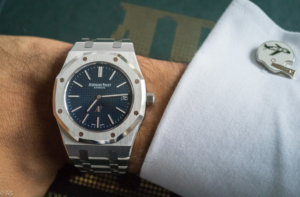
. . . was designed in just one night, inspired by the design of an old fashioned diver’s helmet attached to the diver’s suit by 8 screws (details of another fascinating aspect of its design, below). The Patek Philippe Nautilus was inspired by yacht portholes:
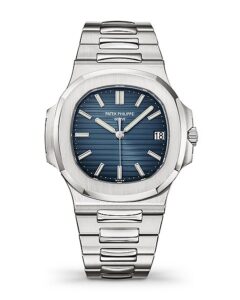
Bell & Ross created their BR-01 inspired by the dials found in an aircraft cockpit.
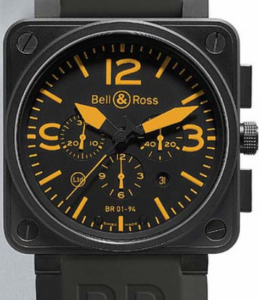
MB&F derives inspiration from many concepts, including spaceship concepts:
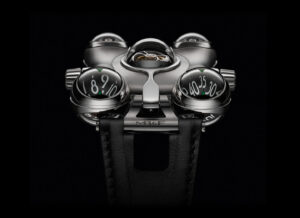
. . . and one from the natural world which I’ll look at below.
The Cartier Tank design was inspired by the military machine of the same name, which had only just been invented at the time:
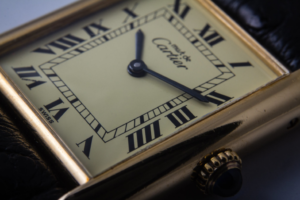
Whether you see the influences in the results, or not, combining ideas from different fields is a way of coming up with something new, as well as having a story, which can be a very important factor in the success of a contemporary watch, for reasons I’ll look at below.
To develop creative ideas for our own watch brand, I would grab inspiring images I came across or make notes of ideas as I discovered them, to explore and develop in more detail later. Some of them produce fascinating results, some don’t. In another section of this article I’ll go into details of how I got the ideas for each of our uniquely creative watches.
Practicalities And Engineering Inspirations
Many aspects of watch design come from the relevant practicalities, such as the rounded edges on pocket watches to prevent them getting snagged on fabric, and the numerous advances in accuracy through the history of watchmaking that still influence the design of timepiece movements, these days often shown off as part of the timepiece aesthetics.
Recently engineering is often used as an impressive accomplishment in its own right rather than needing to have any practical use, such as complications which show the position of the planets.
People today want uniqueness and individuality, innovation and/or links with tradition. People are now more interested than they ever have been in the artistic (such as story, concept, aesthetics etc.) rather than functional attributes of items like watches, especially since the practicality of timekeeping is no longer really necessary on a watch, and certainly not its main function, as shown by the existence of the Haldimann H9:
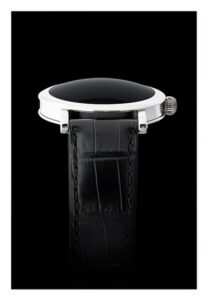
. . . which uses a tourbillon even though it has no time-display at all. Some watch complications such as moon phase, or tides, which, while originally rooted in practicalities, are these days more about the story and/or aesthetic interest than functional necessity, for most people at least.
Some of the changes due to engineering developments led to big shifts in the watch industry, such as the quartz crisis which resulted in further polarization between fine watchmaking and the design of ordinary practical watches.
Practical developments such as waterproof dive watches (such as the Rolex Submariner below), increased legibility for driving and aviation, luminosity for use at night, watches designed to function in space, and tough watches for sports, have also had significant effects on the design and aesthetics of other watches.
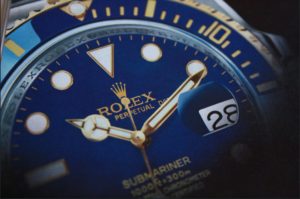
New materials and processes can inspire watchmakers to think differently and consider novel options that these innovative substances make possible. I’ll look at some examples of materials inspiring watchmakers, in the next section.
Here are some examples of engineering or practicalities influencing watch design:
The sleek and dynamic lines of high-performance cars frequently find their way into watch design. From the use of materials like carbon fibre to designs inspired by speedometers and racing dials, watches can pay homage to the world of automobiles.
The Singer Track1 has watch hands directly influenced by rev counter needles on vintage Porsches.
For Wryst timepieces, a car engine camshaft inspired one of their designs, and their logo has an engineering look to it (not inspired by a ninja weapon as some might assume).
The Bulgari Octo Finissimo collection:
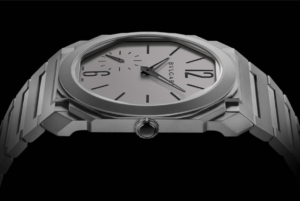
. . . is renowned for its ultra-thin profile and geometric design, inspired by modern architectural principles. The octagonal case and minimalist dial reflect the precision and elegance associated with engineering aesthetics.
Nomos Glashütte‘s watches:
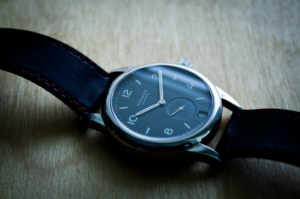
. . . embrace a Bauhaus-inspired design, characterized by clean lines and a minimalist dial. The watch’s aesthetic simplicity mirrors the precision and functionality often associated with engineering principles.
Ressence watches, including the Type 1, feature a unique and innovative design that discards traditional hands in favour of rotating discs. This unconventional approach to time display reflects an engineering mindset, focusing on efficiency and readability, with the innovation also giving the brand a significant story, which is a vial part of successful watch marketing today (as I’ll detail below).
Urwerk’s UR-210 collection showcases a futuristic design inspired by engineering concepts. The satellite complication and exposed mechanics create a visually striking and unconventional time display, reflecting the brand’s commitment to pushing the boundaries of traditional watchmaking:
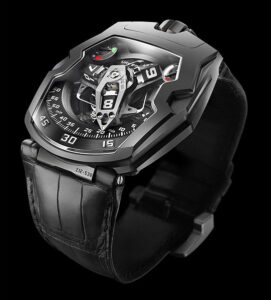
Seiko’s Presage Sharp Edged Series draws inspiration from traditional Japanese craftsmanship and engineering. The angular case design and sharp edges reflect a modern interpretation of engineering principles, demonstrating a harmonious blend of form and function.
HYT watches incorporates fluid engineering into its design, featuring a unique liquid time display:
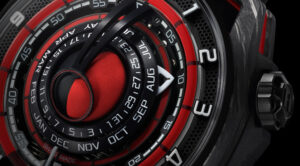
Watch Design Inspirations From Materials
Many new material possibilities have emerged in recent years for watchmakers, with 3D printing, carbon fibre, sapphire glass, titanium, advanced ceramics and more, and often inspire innovations in design.
Watch designers often look beyond traditional materials to create timepieces that are not only functional but also visually stunning. Drawing inspiration from a variety of unconventional materials, these watches showcase the fusion of craftsmanship and innovation:
Romain Jerome‘s Moon Dust DNA collection incorporates actual moon dust into its watch designs. The case features a bezel made from fragments of Apollo 11 spacecraft and a dial with moon dust particles suspended in a special enamel. This unique use of extra-terrestrial material connects wearers to the historic moon landing.
Panerai explores modern materials with the Luminor Submersible 1950 Carbotech. The case is constructed from a composite material called Carbotech, which consists of thin layers of carbon fibre compressed under high pressure. The result is a lightweight, durable, and distinctive watch case with a unique pattern.
Holzkern watches specialize in watches made from various types of wood, this one having a fig leaf as well:
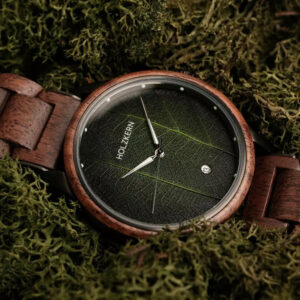
. . . offering a unique and natural aesthetic. Whether it’s walnut or maple to sandalwood or olive,, each watch embraces the warmth and character of the chosen wood, creating a timepiece that is both stylish and eco-conscious.
Hublot‘s Big Bang Bavaria pays homage to traditional watchmaking and craftsmanship by incorporating materials from the Bavarian Alps. The watch features a case made from bronze, a material that evolves over time, gaining a distinct patina. The strap is crafted from hand-stitched deer leather, adding a touch of nature to the timepiece.
Rolex was the first of many manufacturers to use slices of meteorite in watch dials, originally featuring them in watches like this Daytona Meteorite:
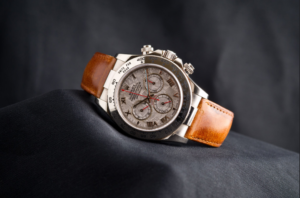
. . . and the Day-Date models. The unique Widmanstätten pattern, formed by the cooling process of the meteorite, adds an otherworldly touch to the iconic Rolex Daytona, creating a timepiece that combines luxury with celestial inspiration. With some meteorite specimens being worth more than 15 times the price of gold, meteorites add a unique talking point to high-end watches.
These examples demonstrate the innovation and creativity in watch design when incorporating unconventional materials.
Cultural Inspirations On Timepiece Design
History
There is a lot of momentum behind culture. The concept of “cultural momentum” is usually applied to the culture of a business, but the same concept applies to cultures in general and how they slowly evolve through time. While innovation has always been a vital part of the evolution of watches, and many watches incorporate new features, the majority of the influence on watch design today is obviously from the history of watchmaking.
One of the reasons for this love of history and tradition is the emphasis placed by the elite on the past which gave them their status, and the ability to buy a watch, since most of them inherited their position until the dramatic increases in social mobility in recent times.
Examples of the influence of cultural context on watch design:
Some Mr. Jones watches are inspired by slowing down time, taking the time to enjoy life without rushing, which is especially important in today’s world where the pace of life can often be frantic, such as “A perfectly useless afternoon“:
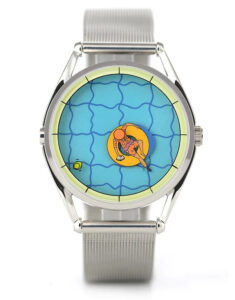
They also have a beautiful timepiece which uses a time-display from a period before watches with hands were the norm . . . their Sun and Moon:
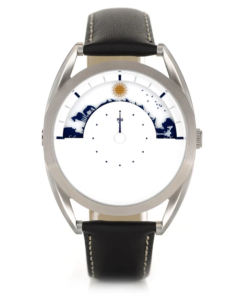
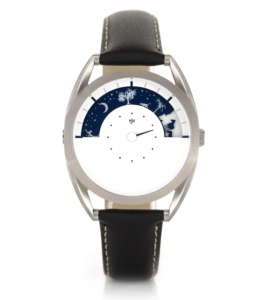
The Camden Watch Company makes timepieces designed in, and influenced by Camden, London, with designs being inspired “by its rich industrial past and its vibrant, dynamic present.”
In the world of watchmaking, history often serves as a rich source of inspiration, with many brands (including some watches from our own brand, see below) drawing on historical events, eras, or iconic designs to create timepieces that pay homage to the past. Here are examples of recent watches inspired by history:
Omega‘s Speedmaster Moonwatch 321 Stainless Steel is a modern tribute to the original Speedmaster worn by astronauts during the Apollo missions. This watch faithfully recreates the aesthetics of the 1960s model, featuring the iconic “Dot over 90” bezel and the legendary Caliber 321 movement, which powered the Speedmaster worn on the moon.
The Longines Heritage Classic “Tuxedo” draws inspiration from the brand’s historical designs of the 1940s. This timepiece features a distinctive black and white “tuxedo” dial, paying homage to the elegance and refinement of mid-20th century watch design.
Tudor’s Black Bay Fifty-Eight Navy Blue is inspired by the brand’s historic dive watches from the 1950s. The watch captures the essence of vintage Tudor Submariners, with its 39mm case size and the iconic “snowflake” hands. The navy blue colour is a nod to the brand’s historical connection to the French Navy.
The Zenith Chronomaster Revival Manufacture Edition is a reimagined version of the A386, a classic Zenith El Primero model from 1969. This watch faithfully recreates the original design, featuring the iconic tri-colour sub-dials and the high-frequency El Primero chronograph movement.
The Rolex Explorer II:
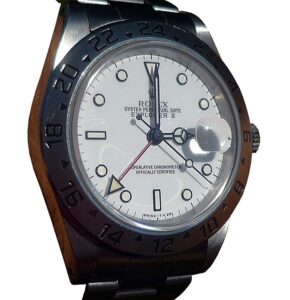
. . . updated in recent years, remains inspired by the original model introduced in the 1970s. Designed for explorers and adventurers, the watch maintains its distinctive orange 24-hour hand and robust construction, reflecting the spirit of historical Rolex tool watches.
Breguet’s Tradition collection:
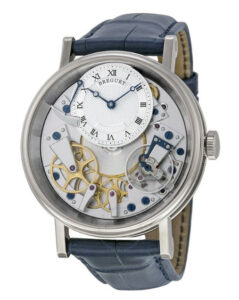
. . . pays homage to Abraham-Louis Breguet’s innovative designs from the late 18th century. The watches feature open-worked dials that showcase the movement’s engineering intricacies, reminiscent of Breguet’s historical contributions to horology.
Many watches are based on concepts from the world of luxury and fine jewellery. Some incorporate traditional craft techniques such as guilloche (such as can be seen on the Frederique Constant Maxi Manufacture Silver Guilloche below), enamelling, engraving etc.
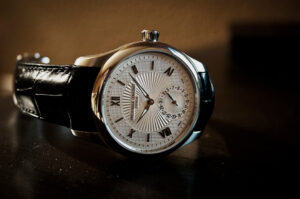
Art movements
There are also numerous watches which draw inspirations from different art movements. For example, the Jaeger LeCoultre’s Reverso is famously related to Art Deco:
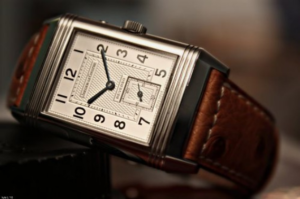
Cubism, with its geometric shapes, abstract forms, and fragmented perspectives, has left an indelible mark on the world of art and design. Several watchmakers have embraced the avant-garde principles of Cubism, resulting in timepieces that challenge traditional aesthetics.
Here are notable examples of watches inspired by Cubism:
Franck Muller‘s Vanguard Skeleton Cubic is a striking representation of Cubist influence. The watch features a skeletonized dial with angular, geometric bridges and a tonneau-shaped case. The overlapping and intersecting elements evoke the fragmented nature of Cubist art, creating a timepiece that is both avant-garde and visually captivating.
The Cartier Crash Radieuse draws inspiration from the distorted and unconventional shapes characteristic of Cubism (as well as having a surrealist influence). The asymmetrical case and dial design, resembling a melting or deconstructed form, pay homage to the experimental spirit of the art movement.
The Hublot Classic Fusion Enamel Britto: Collaborating with contemporary artist Romero Britto, Hublot created the Classic Fusion Enamel Britto watch. The dial features vibrant, Cubist-inspired artwork by Britto, with bold colours and fragmented patterns. The watch captures the essence of Cubism by transforming timekeeping into a canvas of dynamic and abstract shapes.
The Urwerk UR-105 TA Clockwork Orange is a futuristic timepiece influenced by Cubist aesthetics. The angular case and exposed mechanics on the dial create a sense of three-dimensional depth, reminiscent of Cubist paintings that portray multiple perspectives simultaneously. Urwerk’s approach to watchmaking embraces the unconventional, mirroring the principles of Cubism.
The Parmigiani Fleurier Kalpa Hebdomadaire incorporates Cubist elements into its design, particularly in the tonneau-shaped case and the structured dial layout. The watch’s faceted case and geometric indices showcase a modern interpretation of Cubist principles, blending contemporary design with traditional craftsmanship.
Other art movements which inspire watches include Neoclassicism, with its aesthetic austerity and simplicity being mainly a reaction to the flamboyant extravagance of Baroque and Rococo periods which came before. This art movement is an inspiration behind the A. Lange & Söhne Lange 1:
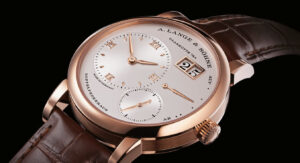
Bauhaus, which literally means ‘construction house’, focuses on functionality and avoids decoration. This art movement inspired jewellery designers to use materials like stainless steel, chrome, and nickel, glass, plastic, and enamel, so it relates to art jewellery (also influenced by other art movements such as the arts and crafts movement) . . . compared to fine jewellery which focuses on precious metals like gold and silver with precious stones, as well as highly polished surfaces.
The Bauhaus or art jewellery influence can be seen in the unpolished machined surfaces on Ochs Und Junior watches, or the deliberately rough 3D printed textures on parts of Holthinrichs watches (below), as well as the use of materials like wood or stone in organic watches.
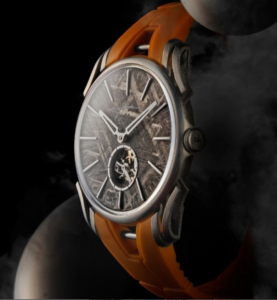
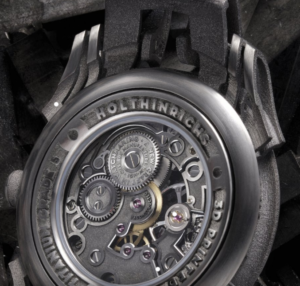
The Need For A Story
Having an interesting story is one of the most effective ways of marketing timepieces in today’s competitive context. As we’ve seen from the examples above, design inspirations, as well as producing practical and/or aesthetically interesting results, also create an interesting watchmaking story.
The story should ideally be the fundamental origins of the watch design, rather than added after the event for marketing purposes as with the understandably disliked use of limited-editions for no good reason (such as just changing the colour of the dial).
Many microbrands start designing a watch because what they want either doesn’t exist or was very expensive, giving them a great starting point for a brand story. For example, company founder, Abingdon Mullin, of Abingdonco, had the idea for her brand when, after finishing pilot training, she realized that there were no pilots watches for women. So she founded the watch brand for adventurous women like herself.
Here are a few examples of watches with a great story that also inspired design elements:
One notable example is the Omega Seamaster Aqua Terra collection:
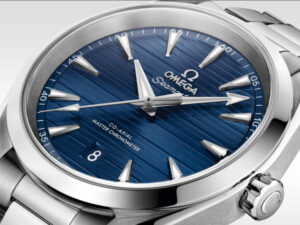
. . . where the teak-patterned dial mimics the texture of wooden decks on luxury yachts
Another example is the Cities of Light collection, by Vacheron Constantin which have a map on the dial.
Hublot, the Classic Fusion Aerofusion Chronograph Special Edition Concrete Jungle is inspired by New York style, with a concrete bezel.
Urwerk’s Stormtrooper-inspired EMC TimeHunter has a distinctive all-white coating. The spaceship-shaped UR-220 was codenamed the “Falcon Project” after Han Solo’s beloved Millenium Falcon.
The Marloewatchcompany’s Derwent collection, (a great example of a luxury British brand) gets its name from Derwentwater, one of the principal bodies of water in the Lake District, one of the most beautiful areas of England. “While on a trip exploring this beautiful patch, we happened upon the remains of an old pressure gauge abandoned on the banks of Derwentwater and immediately fell for its beautiful style.“
Darwin & Da Vinci are the inspirations behind David Candaux’s DC7 Genesis, influenced by architectural drawings of Leonardo da Vinci and the theories on evolution and beauty put forward by Charles Darwin.
Some watches are inspired by nature, such as the Audemars Piguet Royal Oak Frosted Gold, inspired by the frosty appearance of winter leaves. The watch’s surface is meticulously adorned with a frosted gold finish, capturing the delicate yet resilient nature of frost-kissed foliage. They say: “The white gold is “frosted” using a diamond tipped chisel technique to create an overlayed series of micro indentations that when complete take on a beautiful glistening finish very similar to frost on a winter morning.“
Jaquet Droz, a brand renowned for its artistic craftsmanship, embraces nature in the Petite Heure Minute Relief Carps. The dial features intricately sculpted koi fish, a symbol of perseverance and good fortune in Asian culture, showcasing the brand’s dedication to incorporating natural elements into its designs.
Another example of an inspiration from nature is a watch inspired by a jellyfish. In 2017, MB&F released Horological Machine 7, The Aquapod, in which you can see the domed shape of a jellyfish:
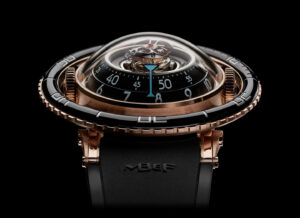
Collaborations: More Than Inspiration
Beyond being inspired by something or someone, collaborations are a way to come up with new watch design while also having a great story, by having another creative individual or company design or strongly influence aspects of a watch.
I am very much looking forward to seeing the results from the collaborations and open art/design competition which are a part of our own brand’s open philosophy and our dedication to inspiring others to create unique and fascinating timepieces to go alongside my own creations (below).
Watch collaborations bring together the expertise of renowned watchmakers with the creativity and unique perspectives of other brands, designers, or personalities. These collaborations often result in limited-edition timepieces that capture the essence of both contributors. Here are some great examples of watch collaborations:
Hublot x Ferrari:
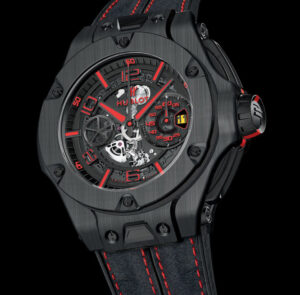
The collaboration between luxury Swiss watchmaker Hublot and Italian sports car manufacturer Ferrari has produced several iconic timepieces. The Hublot Big Bang Ferrari collection (above) features design elements inspired by Ferrari cars, such as the use of materials like carbon fibre and innovative case shapes resembling car components.
Tag Heuer x Alec Monopoly:
Tag Heuer collaborated with street artist Alec Monopoly to create a collection of vibrant and artistic timepieces. The watches feature Monopoly’s signature graffiti-style artwork on the dial and strap, adding a playful and contemporary touch to Tag Heuer’s designs. This is a great example of a watchmaker collaborating with an artist.
Zenith x Range Rover:
Zenith teamed up with luxury automotive brand Range Rover to create the Zenith Defy Classic Range Rover Edition. The watch reflects the sleek and sophisticated design language of Range Rover vehicles, with a ceramic case and a special colour scheme inspired by the luxury SUV, and elements from its wheel design.
Swatch x Keith Haring:
Swatch collaborated with iconic artist Keith Haring to create a collection of vibrant and expressive watches. The Swatch x Keith Haring collection features Haring’s distinctive artwork on the watch dials, turning each timepiece into a wearable canvas.
Rolex x Comme des Garçons:
Rolex collaborated with fashion brand Comme des Garçons to create a limited-edition version of the iconic Rolex Daytona. The watch features a blacked-out aesthetic with the Comme des Garçons logo on the dial, adding a contemporary and fashion-forward twist to the classic Rolex design.
The Franck Muller Double Mystery Tourbillon Hom Nguyen:
. . . features the work of Hom Nguyen, a self-taught French-Vietnamese painter whose works (below) are about the human condition. He received the Chevalier de l’Ordre National du Mérite prize in 2022.:
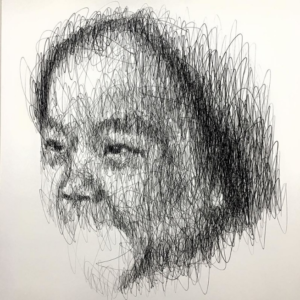
He chose to show a child’s face looking up, drawn in pen directly onto the mat black dial, resulting in a unique aesthetic for this watch.:
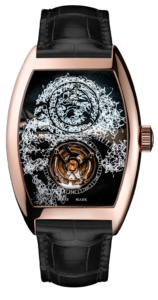
These collaborations showcase the diverse and creative partnerships that have enriched the world of watchmaking, combining the technical expertise of watchmakers with the artistic visions of designers, brands, and cultural icons. Each collaboration tells a unique story and produces timepieces that are highly sought after by collectors and enthusiasts alike.
And a watch brand that uses art in a way which is more profound than a collaboration . . . unlike most collaborations that simply decorate conventional watch designs, our entire timepiece is conceived as a unified artistic statement – making us the first brand to truly unite the worlds of fine art and horology . . .
UnconstrainedTime, Based On Freely Chosen Aesthetics
In 2013, a dream revealed something extraordinary: a vision of how timepieces could transcend their traditional bounds and become pure artistic expression. Not by decorating existing watch creations, but by liberating the entire form to facilitate creativity.
Drawing from the ancient tradition of the 12-point time ring – a concept that dates back to ancient Near East timekeeping – we stripped away conventional limitations. What remained was the simple heart of a time display that freed the rest of the watch to become a canvas for genuine artistic exploration.
Each UnconstrainedTime piece is conceived and developed as a unified artistic vision. These aren’t simply timepieces with artistic elements – they are wearable sculptures that tell time. Each one including its creator’s signature and produced in small, considered quantities.
My background in fine art and cutting-edge contemporary music, with no experience of conventional watchmaking, naturally resulted in personal explorations of freely-chosen aesthetics unified with the 12-point concept from ancient horology, rather than being based in the engineering and fine jewellery basis of almost all watch design.
Here are details of the inspirations behind each of the initial watches in our range (click on the watch name or any image, for more info on that watch):
Cross #1 watch: My original inspiration for this sculpture was an image of an old gold cross, with a subtly textured surface and slightly rounded corners, from a time before watches were even dreamed of.
Ideas I explored included a wood cross in the centre of a metal star-shape, as well as a variety of other creative possibilities.
I continued exploring the concepts, combining ideas with using diamonds as our 12-point time-display, drawn from the essence and spirit of ancient jewel-encrusted crosses.
I sketched a variety of different ideas, developed the one which was working best, then re-worked it as a diagram, using vector software, which I gave to the 3D modeler, who, with some additional guidance along the way, created the 3D rendered versions, in different combinations of some of my favourite woods, with beautiful metals.
For additional details, see the Inspirations and Development section of our Cross #1 page.
Stone-hold watch: The main inspiration was a stereo-tactic frame, which is the circular metal frame used to hold a human head still in an exact position for precision brain surgery. It consists of a circular frame with narrow extensions coming in along radii.
This starting point led to the concept of a circular form holding something precious inside it, such as a semi-precious stone.
Exploring and developing the concept with the 3D modeler, it evolved into the current version, which is one option among many possible variations that I might explore.
For more details, images of stereo-tactic frames etc. see the Inspirations and Development section of our Stone-hold page.
Hip Hop #1 watch: The concept started with the word “Hip-hop,” presented in bold, heavy rectangular lettering on the middle of the watch, with the rectangular concept continued on either side. I like how it represents the chunky massiveness of hip-hop beats.
For more details see the Inspirations and Development section of our Hip Hop #1 page.
Tropical Crystal watch: the inspirations were the contrast between interwoven tropical tree roots, very organic, sinuous and enchanting, with the beautiful and angular geometries of raw quartz crystals. The tropical tree roots concept was created algorithmically by the 3D modeler.
For more details see the Inspirations and Development section of our Tropical Crystal Watch page.
Techno-circle #1 watch: the inspiration for this watch was the beauty and complexity of some techno circle graphics I’d seen.
I also saw a graphic image of something similar in 3D, with different layers, inspiring me to experiment and create my own version. It took a lot of time to draw all the details of each layer, using vector software, but I love the results.
For more details, see the Inspirations and Development section of our Techno Circle #1 watch page.
Poppy Seed Pod watch: The inspiration is, of course, the beautiful organic forms and textures of a poppy seed pod, and the sights, sounds and scents they evoke, of corn fields in rural England being harvested in late summer.
For more details, photos, sketches etc., see the Inspirations and Development section of our Poppy Seed Pod watch page.
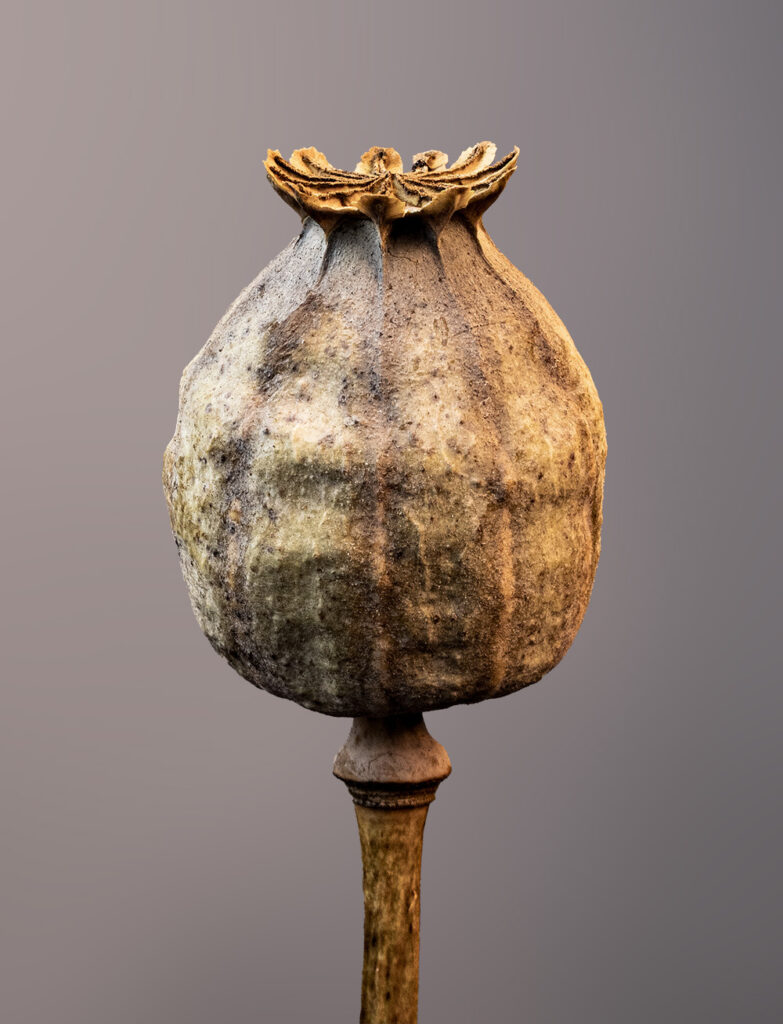
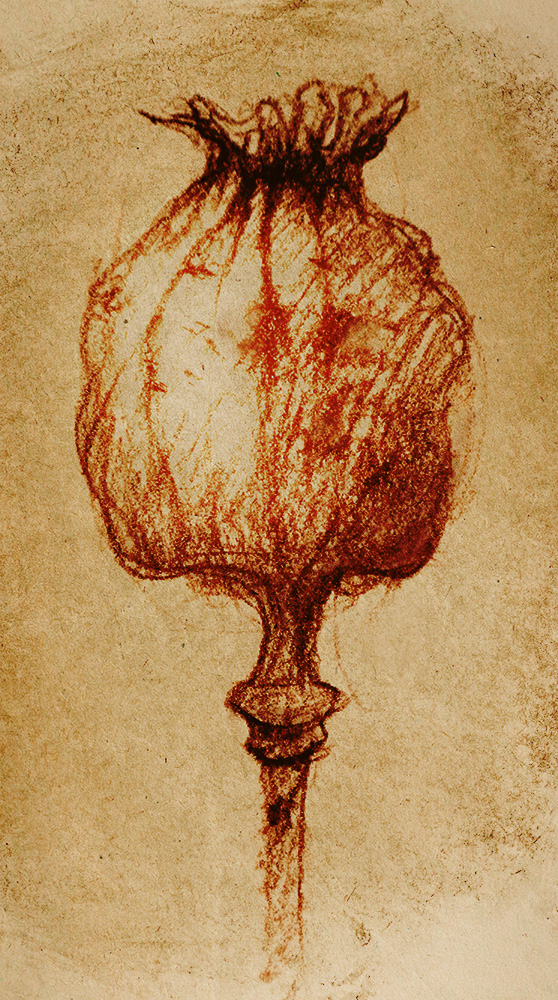
Fractal Emergence: I have loved fractals since I first saw them, and worked with them as a fine artist and a music composer. I was excited to find such a beautiful 3D fractal to use as the basis of this watch, making the rest of the design as plain and simple as possible while aligning with the curved nature of the fractal, to keep as much of the focus as possible on the fractal itself:
For more details, including images of the original fractal we used, see the Inspirations and Development section of our Fractal Emergence watch page.
Fractal Emergence (above) is the watch we’ll be launching with, so . . .
Don’t miss our launch!
What do you consider the most interesting inspiration for watch design, and why? I’d love to hear your thoughts below, or on our social media.
Author: Chris Melchior

This article was authored by Chris Melchior, founder of UnconstrainedTime and creator of the original range of wrist-worn sculptures of this unique artistic adventure.
Chris has extensive knowledge and experience of creativity, including fine art and cutting-edge contemporary music composition, and was awarded a First Class Honours Degree in fine art and music with a minor in philosophy.
Chris’s life-long artistic obsessions include organic forms and textures, abstraction, fractals, and the aesthetic essence of musical genres.
He has developed unusually deep insights into the elemental concepts underlying areas including Eastern and Western philosophies, science and technology, creativity and the arts, as well as empirical spirituality in which he is acknowledged as a leading authority.
He has a profound fascination and love for the unique and synergistically creative combination of fine art with the ancient essence of time-keeping which evolved into the UnconstrainedTime project.

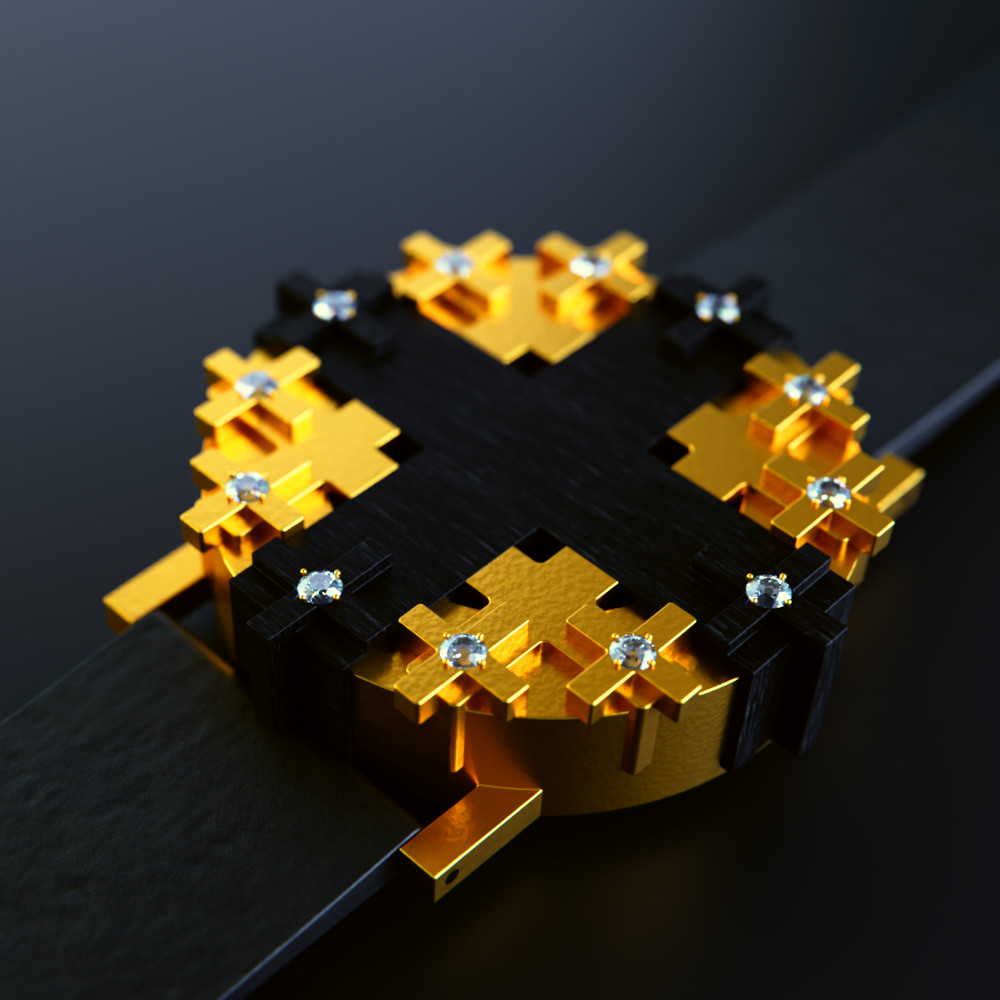
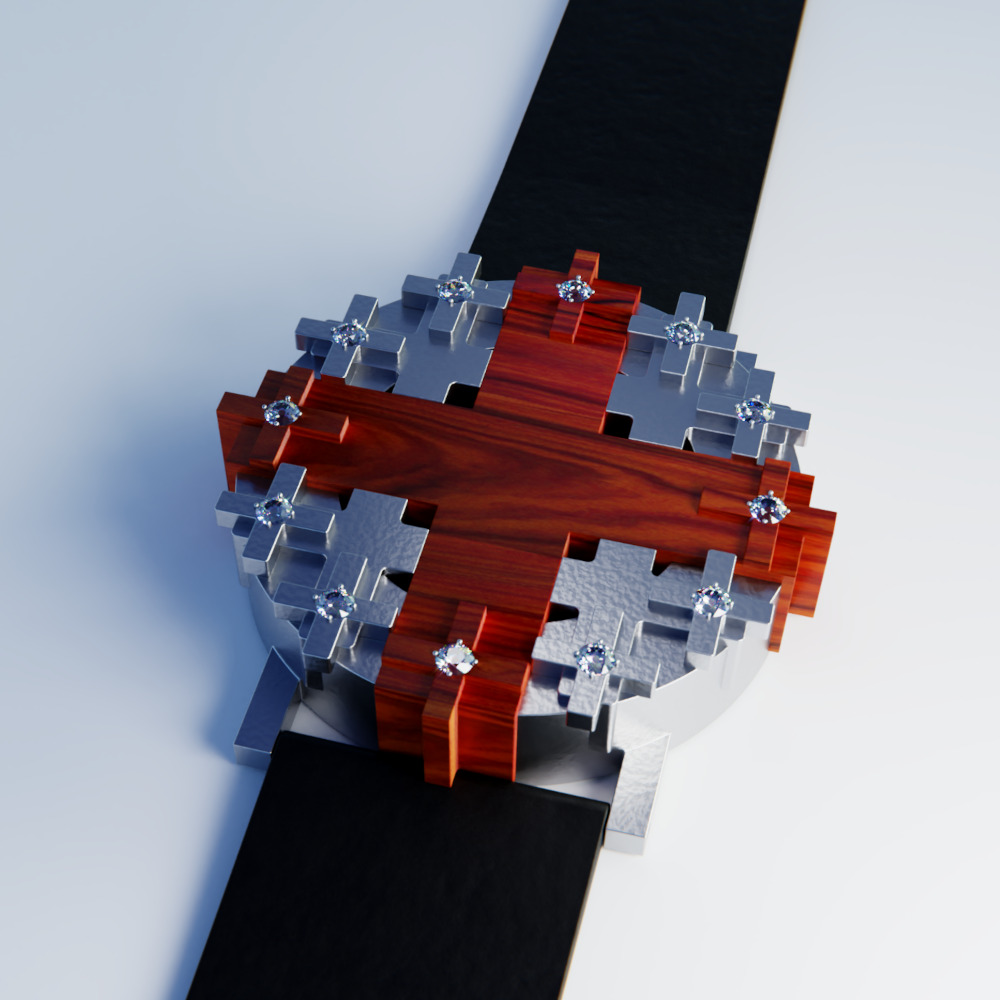
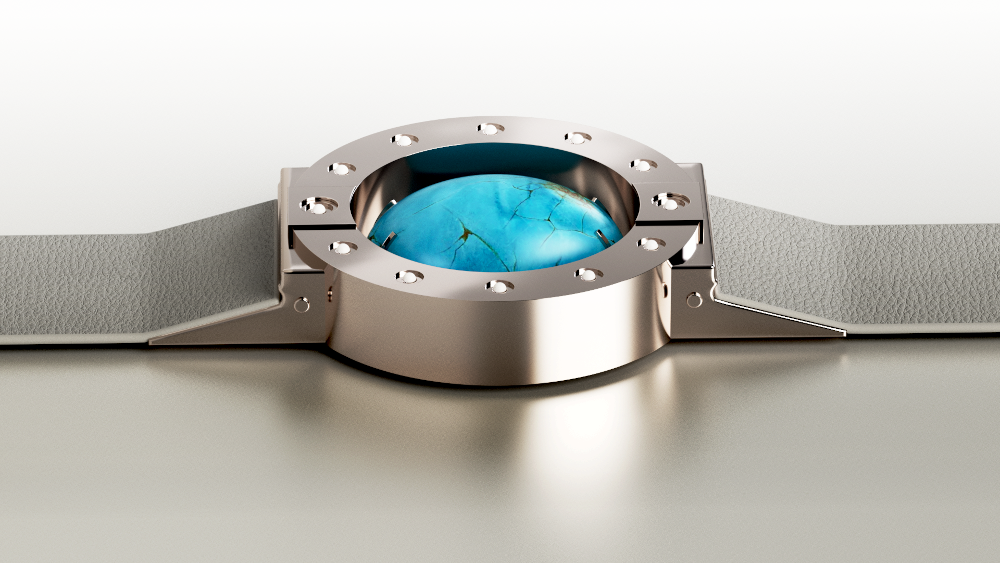
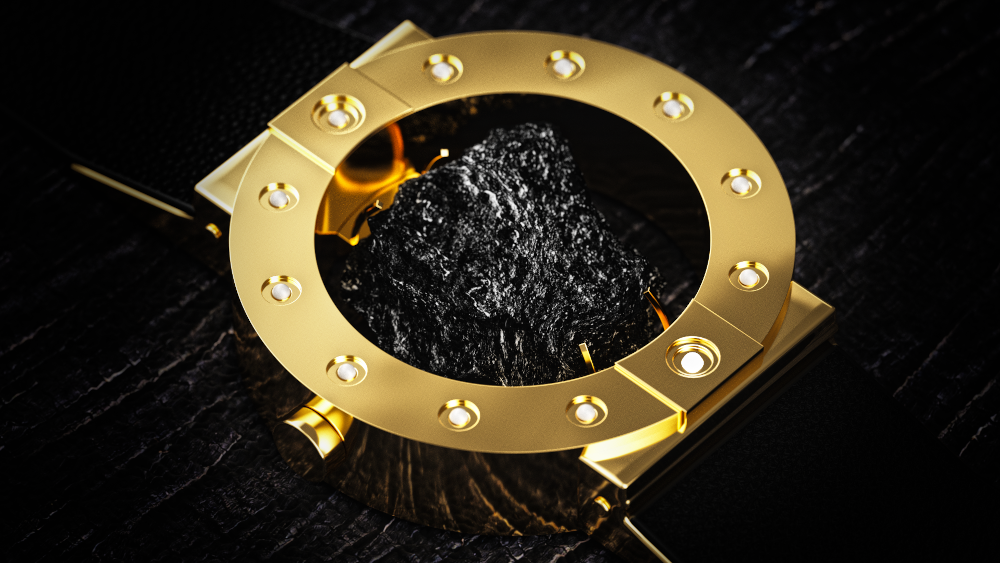
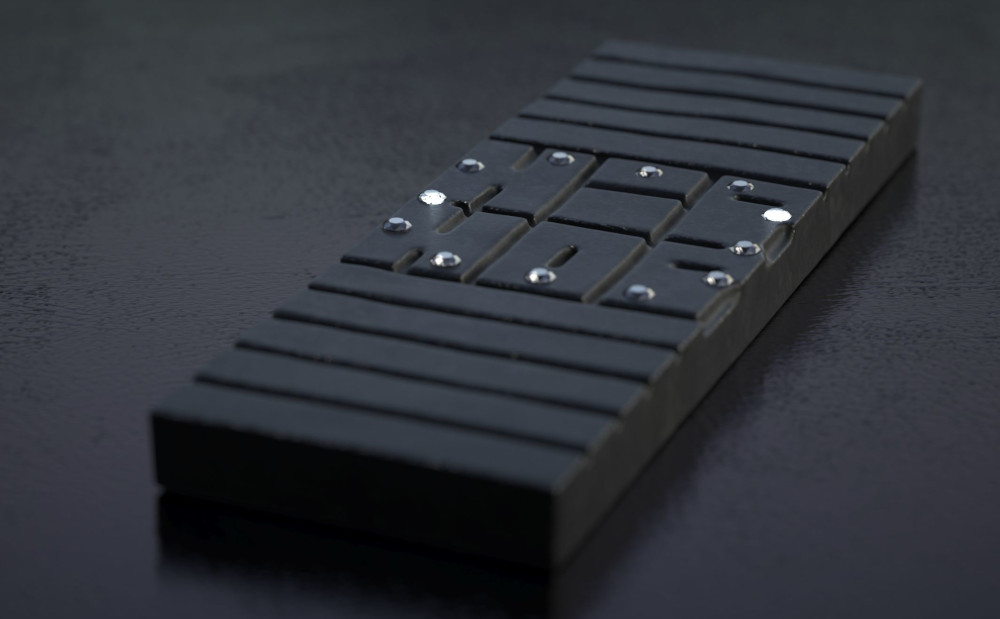

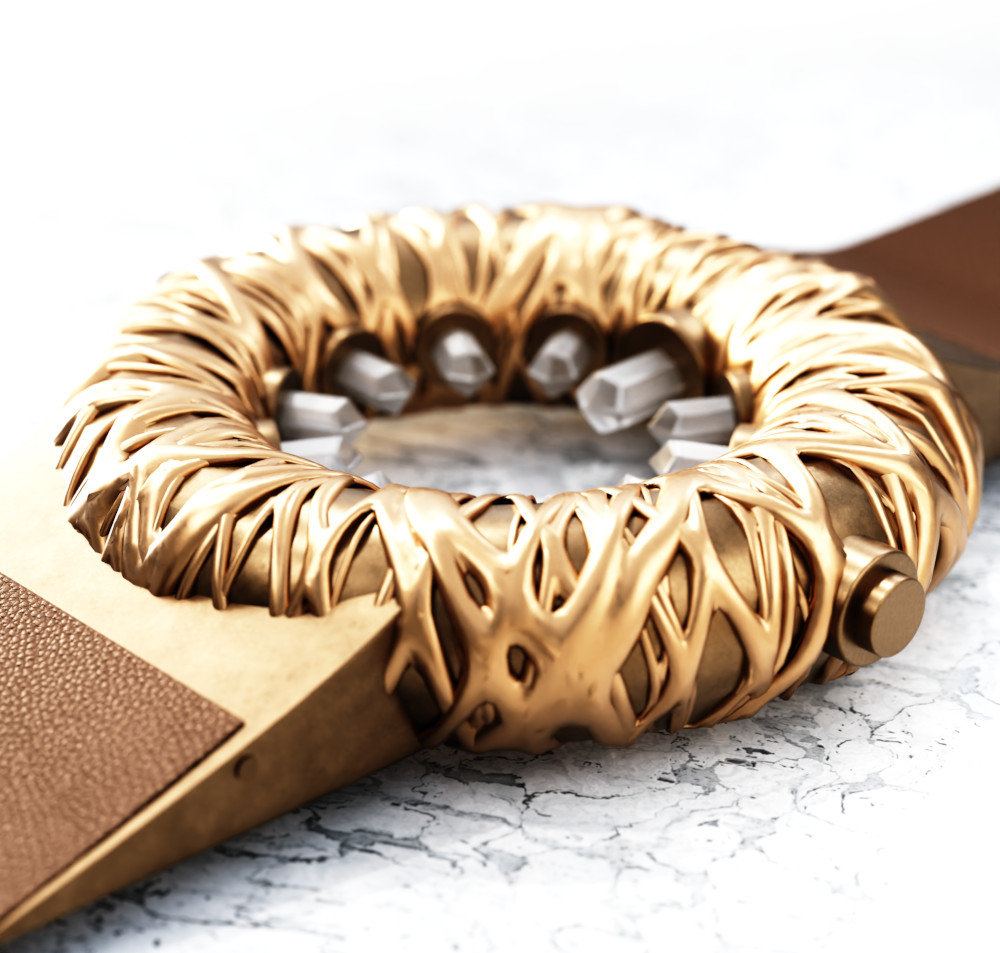
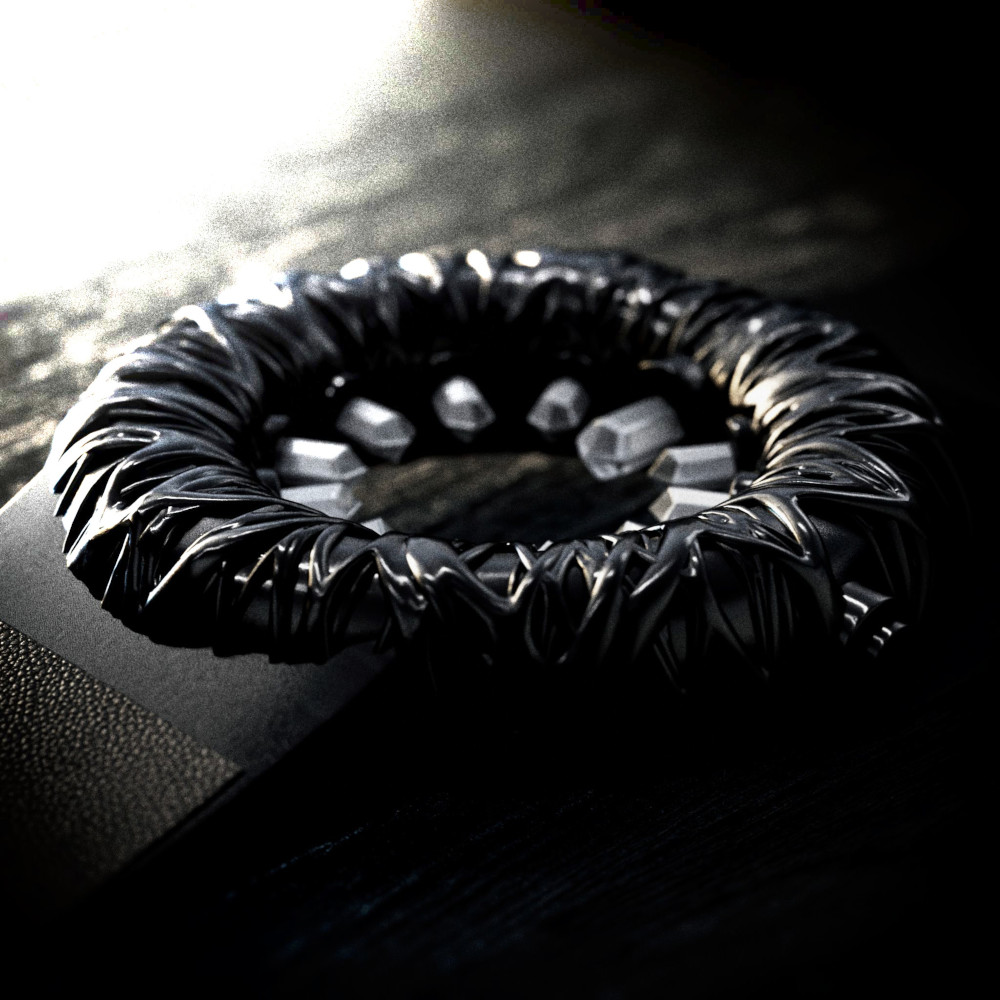
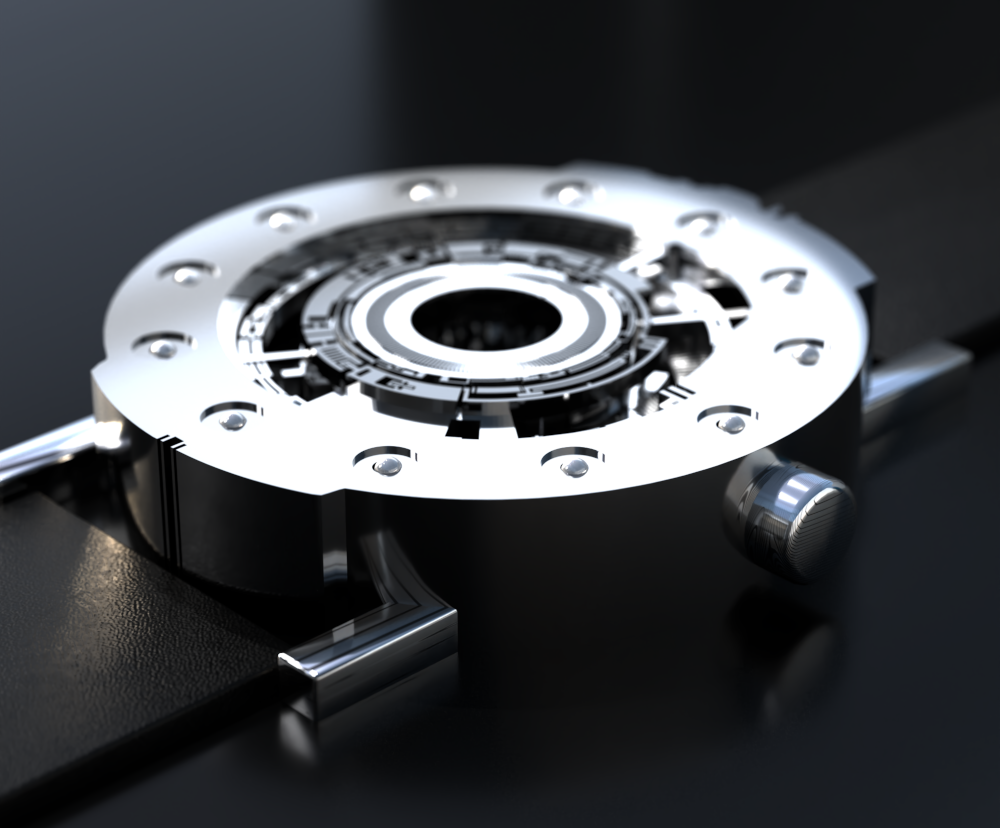
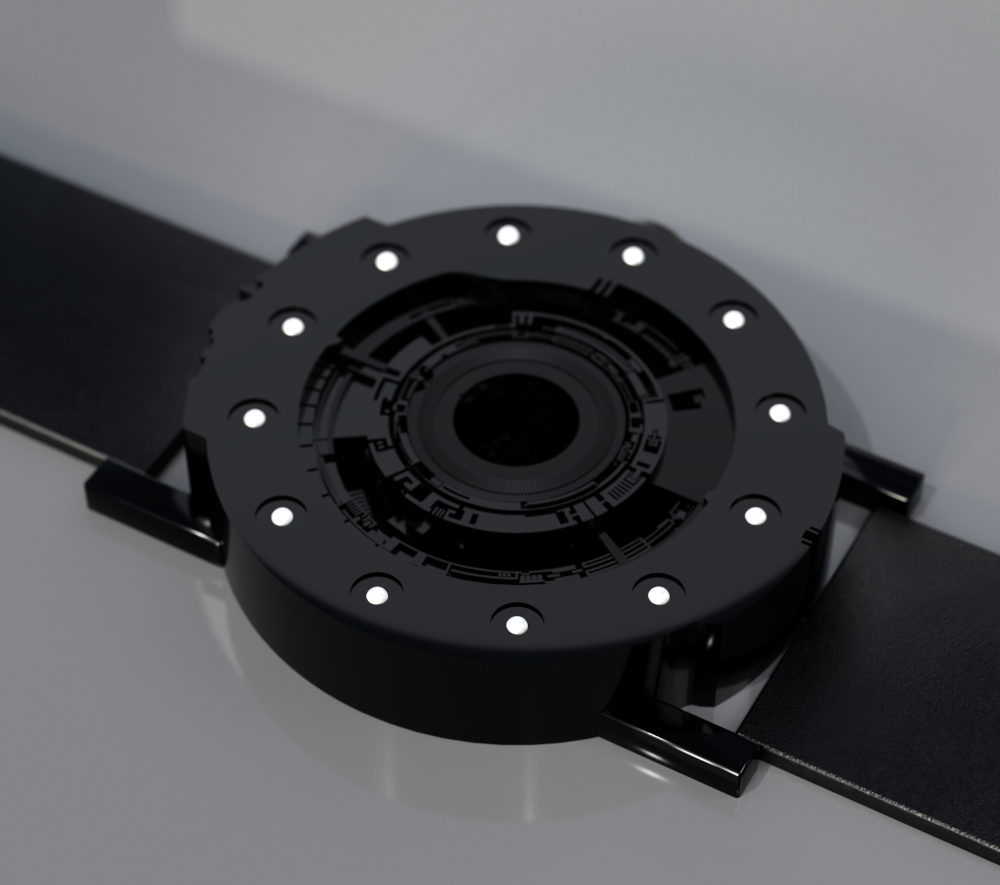
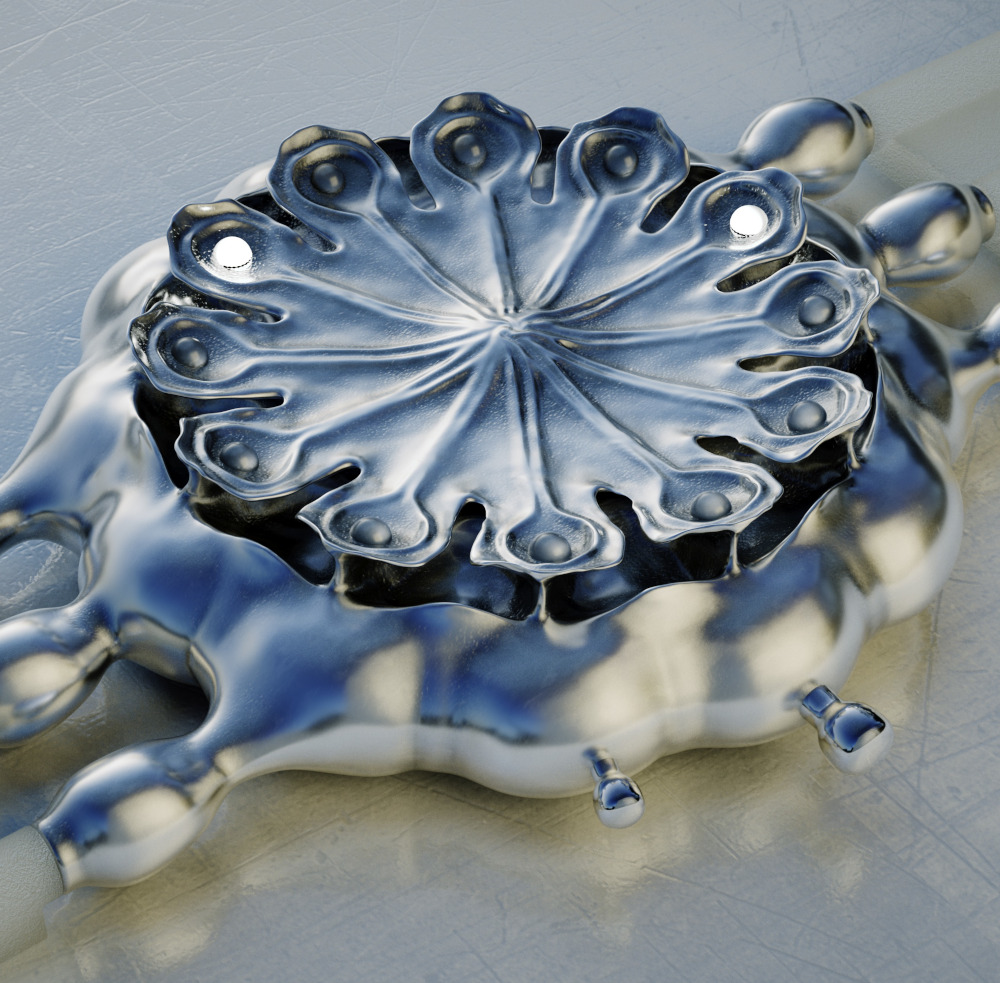
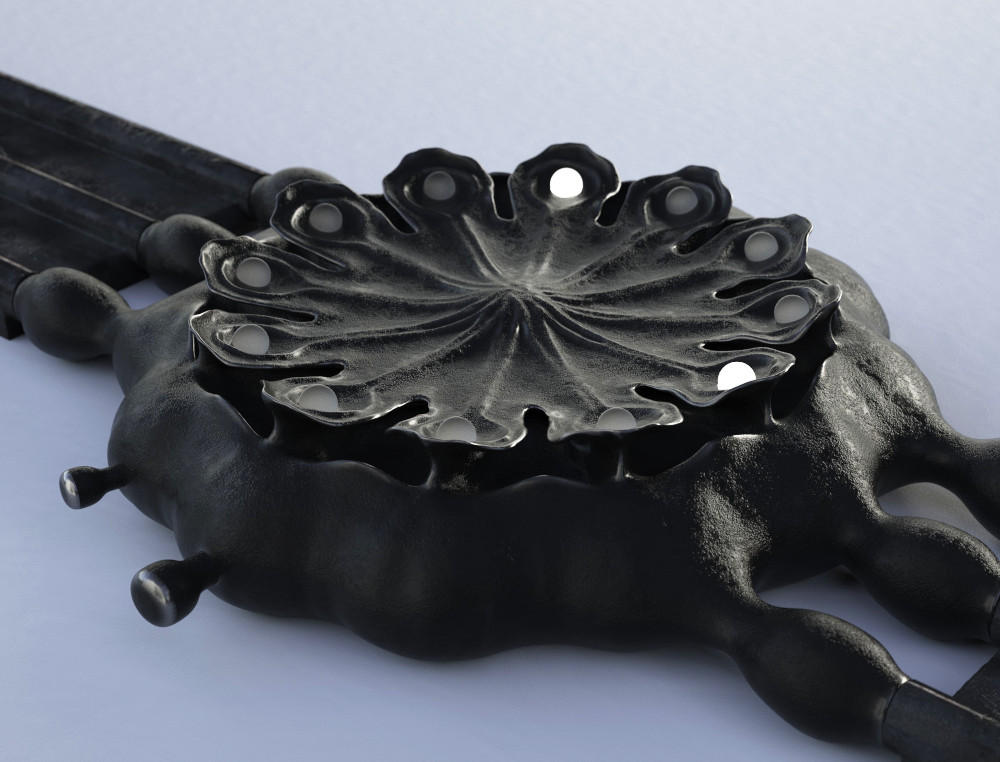
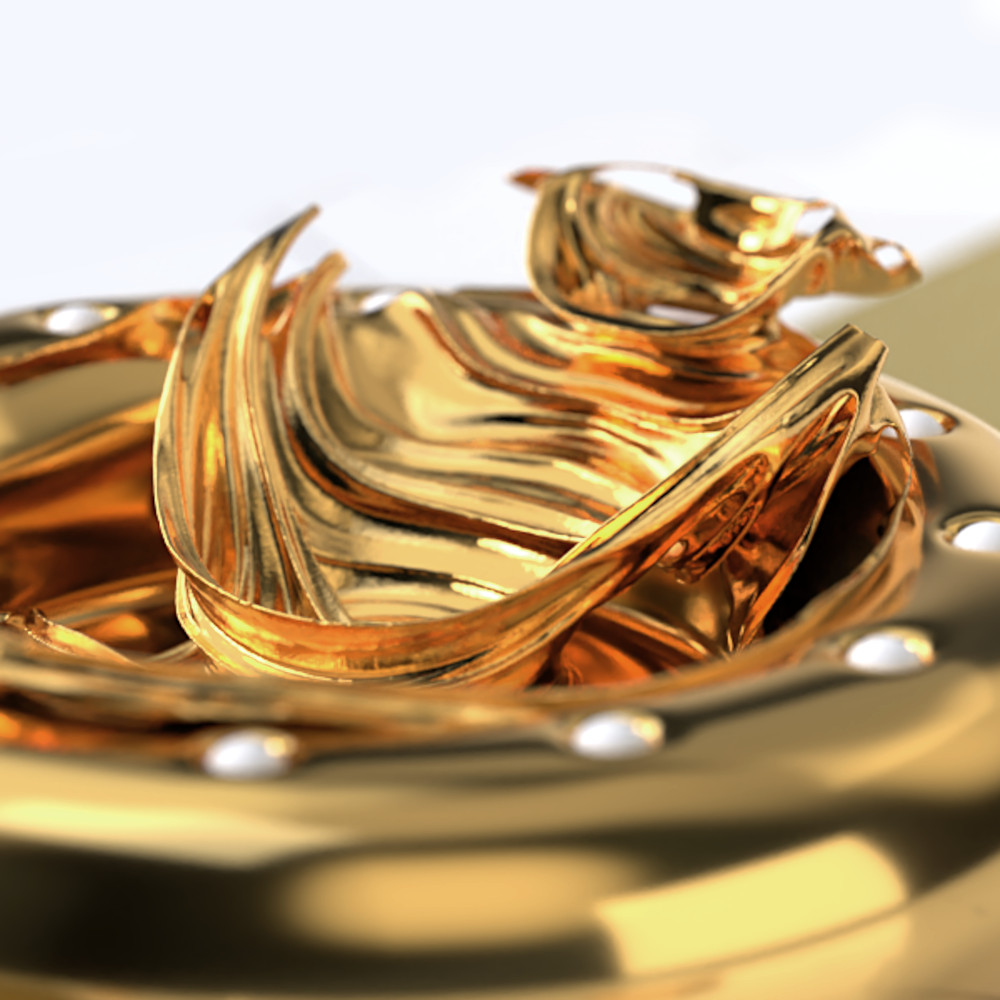
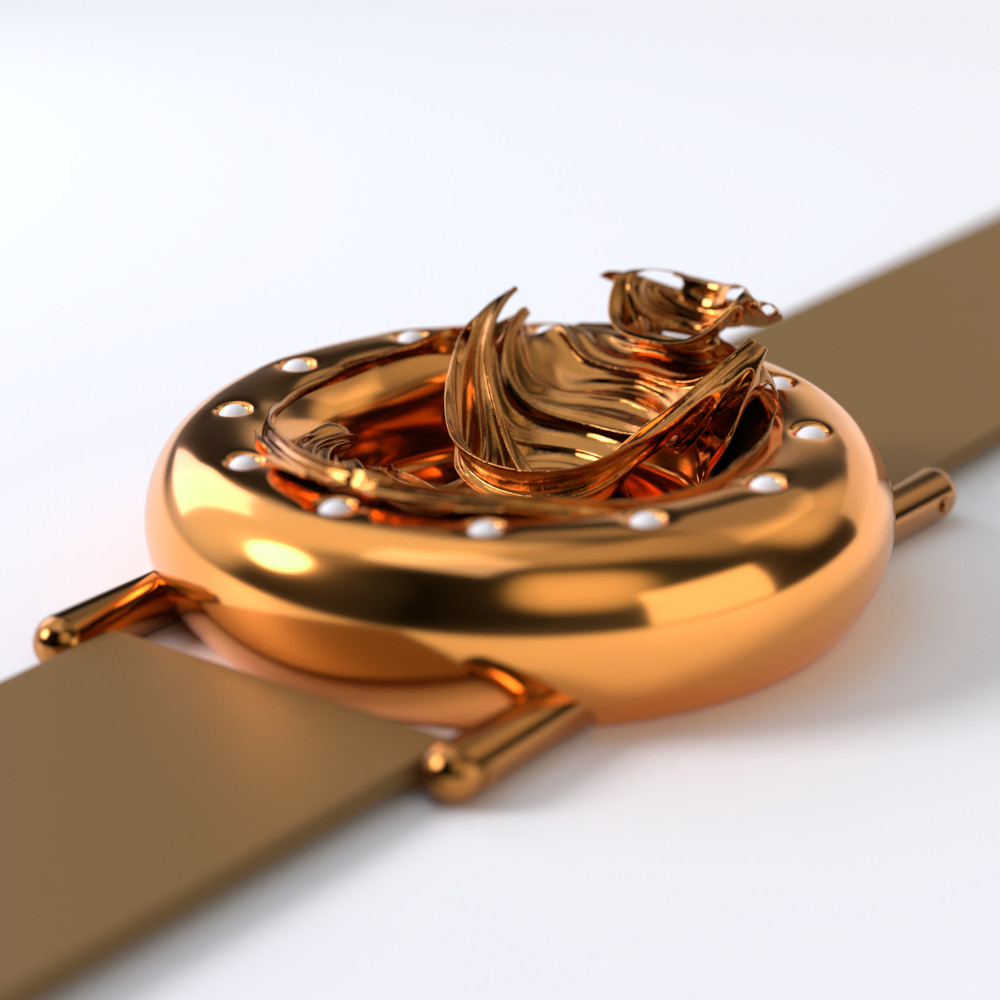
Leave a Reply